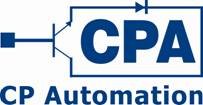CP Automation now distributes and fits the REVCON boost converter module RSU as part of its range. This unit enables highly efficient uninterruptable power supply (UPS) of variable frequency drives (VFD). This compact power unit has huge cost saving implications for anyone that uses power loss ride through in their processes.
UPS systems provide an electrical supply that is converted from batteries when the mains supply is lost in situations such as brown outs, unstable supplies or emergency lift evacuations. The REVCON boost converter module RSU is set to change the way factories maintain their power supply.
"Traditional UPS systems lead the power to the VFD through the complete UPS application, even when power supplies are operating normally," said John Mitchell, global business development manager at CP Automation. "This results in unnecessary power losses due to rectification and invertation of the voltage.
"By adding a REVCON boost converter to the system, the UPS remains inactive when power supplies are working normally. This means the VFD is supplied directly by the mains, rather than having the middle-man UPS system causing unnecessary power losses."
When the mains power supply is down, the REVCON boost converter is activated and sets the voltage value from the batteries to the required level of the VFD. This maintains the power supply in the DC bus to the VFD, without any interruption.
This simple principle enables a highly efficient, yet inexpensive option for uninterruptable power supply to VFD drives. While conventional UPS systems have an efficiency of 90 to 95 per cent, adding a REVCON boost converter means the UPS setup will have efficiency greater than 99.5 per cent. This has huge cost saving implications for a range of industries that use power loss ride through in their processes.
CP Automation is available to supply and install the REVCON boost converter module RSU. For more information about CP Automation's catalogue of REVCON products, go to www.cpaltd.net.

UPS systems provide an electrical supply that is converted from batteries when the mains supply is lost in situations such as brown outs, unstable supplies or emergency lift evacuations. The REVCON boost converter module RSU is set to change the way factories maintain their power supply.
"Traditional UPS systems lead the power to the VFD through the complete UPS application, even when power supplies are operating normally," said John Mitchell, global business development manager at CP Automation. "This results in unnecessary power losses due to rectification and invertation of the voltage.
"By adding a REVCON boost converter to the system, the UPS remains inactive when power supplies are working normally. This means the VFD is supplied directly by the mains, rather than having the middle-man UPS system causing unnecessary power losses."
When the mains power supply is down, the REVCON boost converter is activated and sets the voltage value from the batteries to the required level of the VFD. This maintains the power supply in the DC bus to the VFD, without any interruption.
This simple principle enables a highly efficient, yet inexpensive option for uninterruptable power supply to VFD drives. While conventional UPS systems have an efficiency of 90 to 95 per cent, adding a REVCON boost converter means the UPS setup will have efficiency greater than 99.5 per cent. This has huge cost saving implications for a range of industries that use power loss ride through in their processes.
CP Automation is available to supply and install the REVCON boost converter module RSU. For more information about CP Automation's catalogue of REVCON products, go to www.cpaltd.net.




